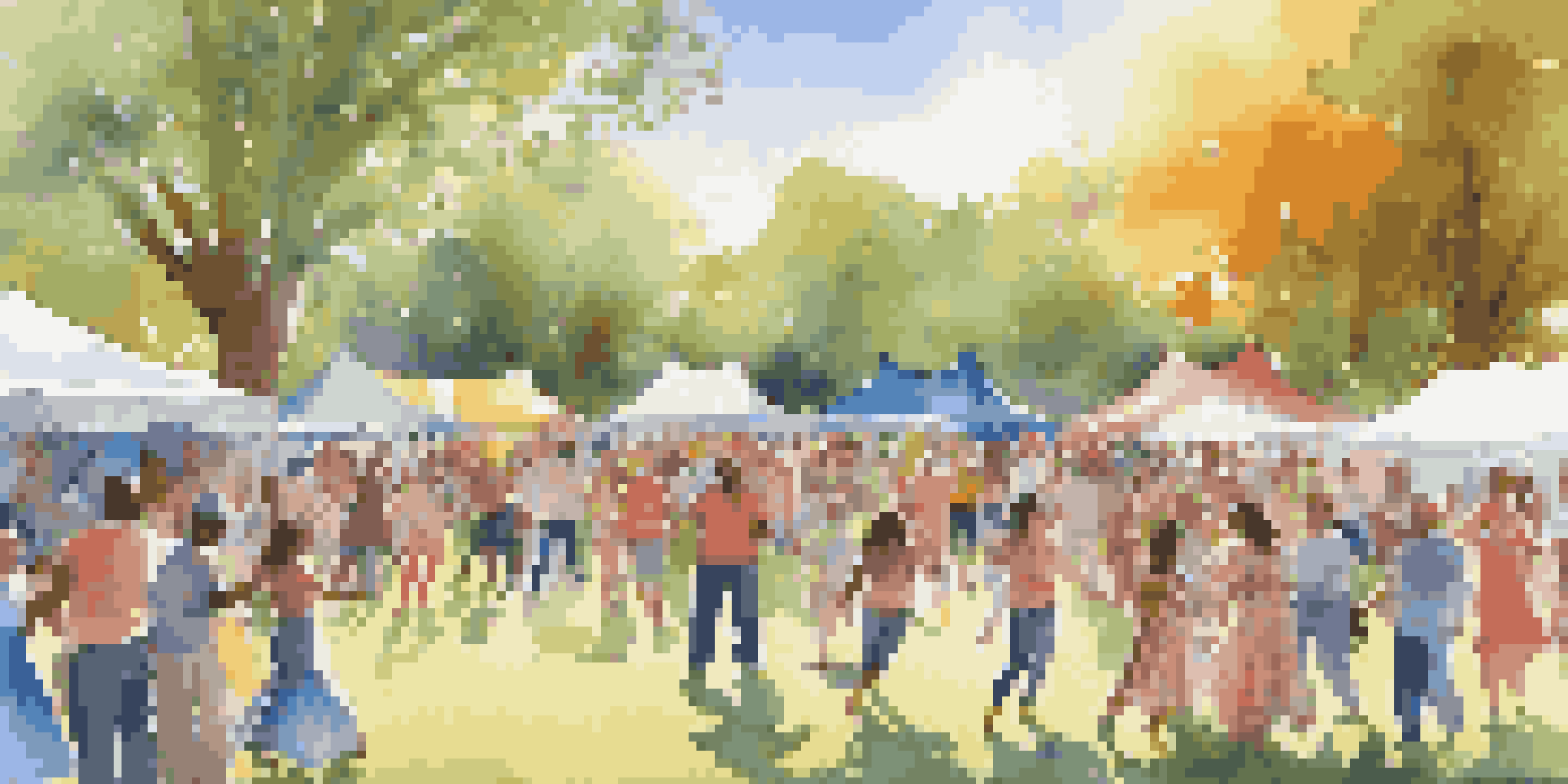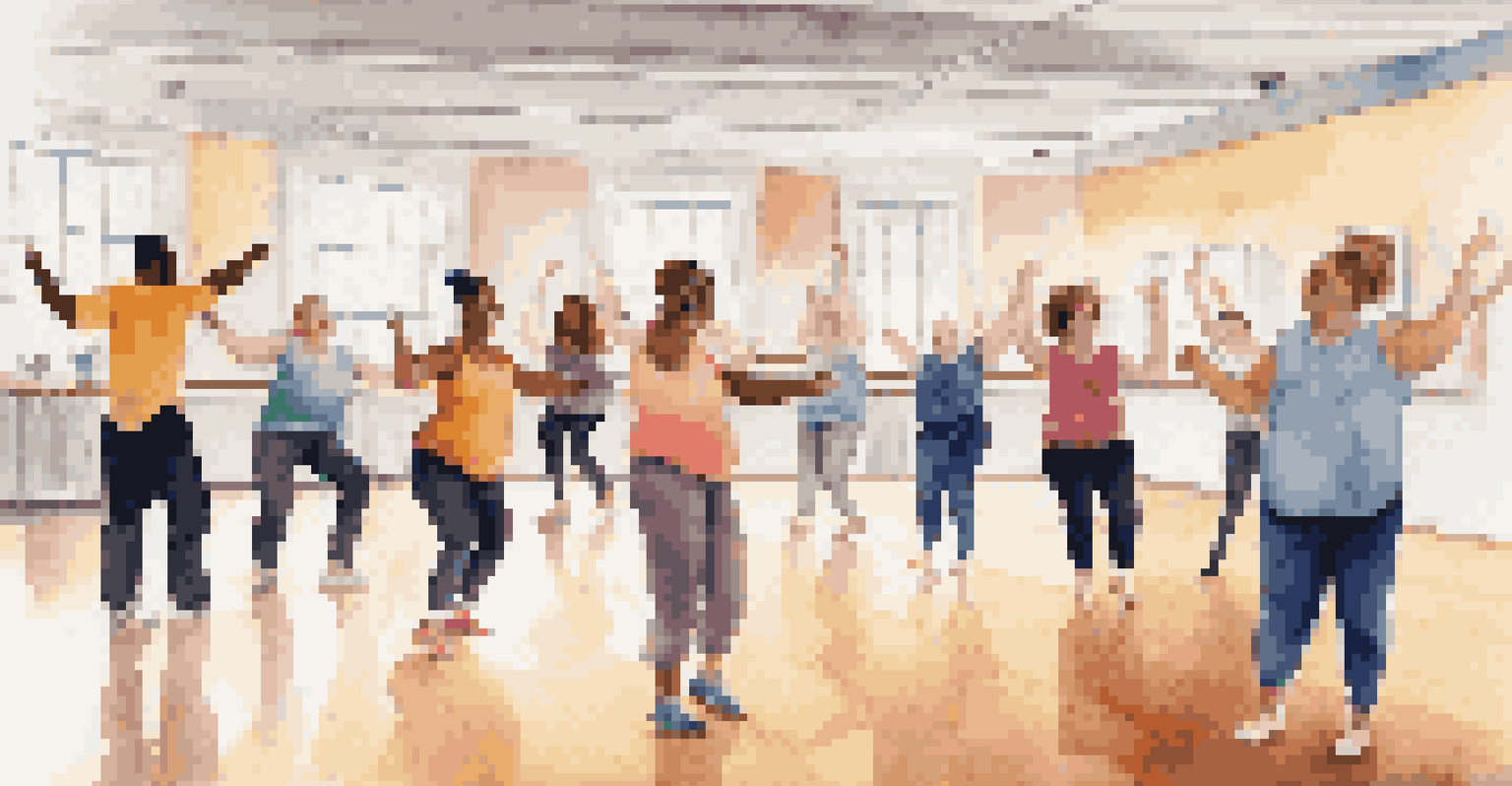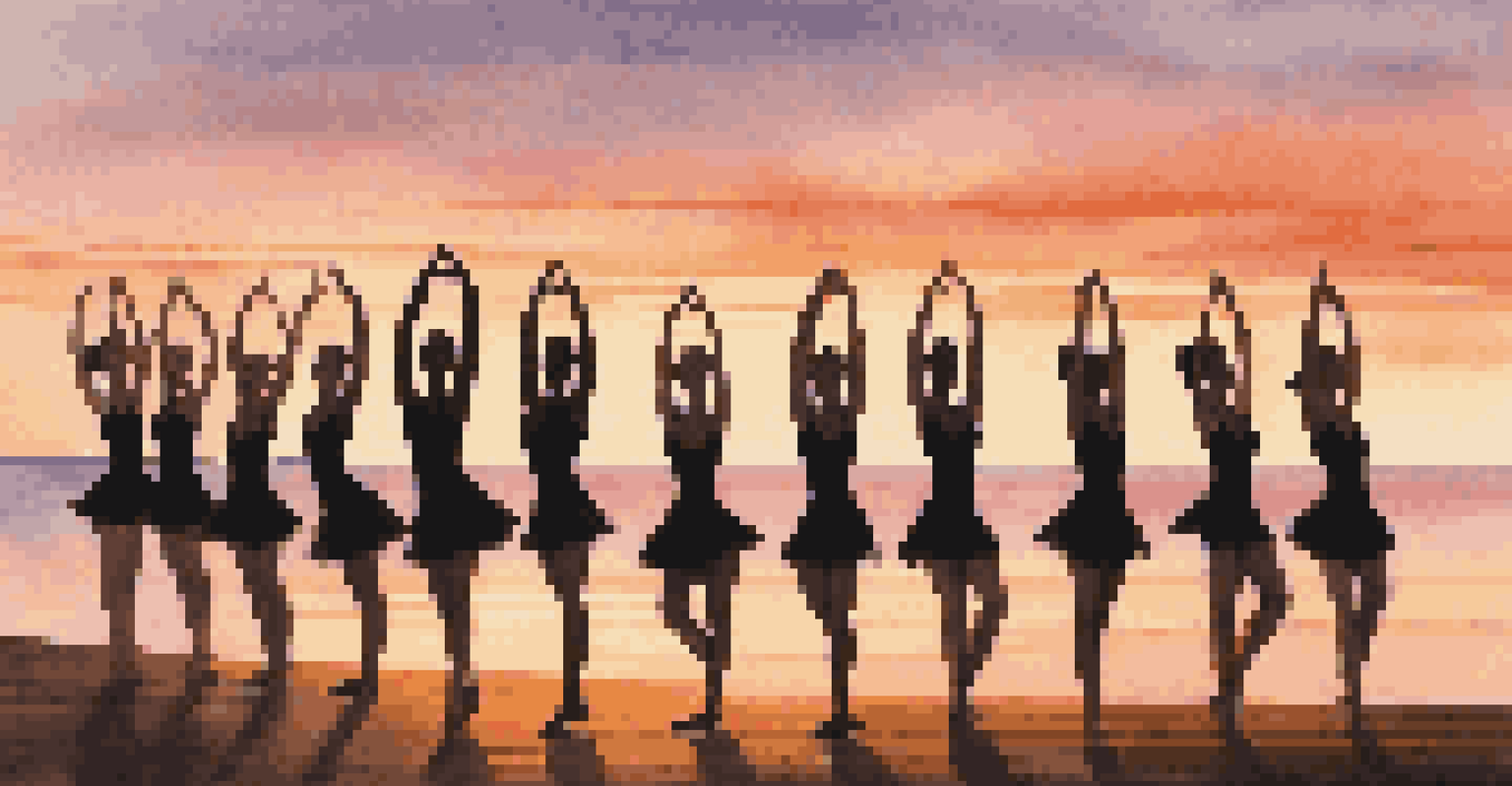Public Policy Frameworks: Supporting Dance Engagement

Understanding Public Policy Frameworks in Dance Engagement
Public policy frameworks are structured guidelines that help shape how communities invest in arts, including dance. These frameworks often outline the goals, resources, and methods for enhancing cultural activities. By defining parameters for funding and support, they can create environments where dance can flourish.
Dancing is like dreaming with your feet.
Engagement in dance is not just about participation; it's about fostering a sense of community and identity. When public policies prioritize dance, they encourage a cultural landscape where everyone feels welcome to express themselves through movement. This commitment can lead to increased attendance at dance events and classes.
Moreover, these frameworks can facilitate collaborations among local governments, schools, and arts organizations. Such partnerships are crucial for creating robust dance programs that reach diverse populations. Ultimately, well-structured public policy frameworks can be the backbone of a thriving dance culture.
The Role of Government in Supporting Dance Initiatives
Governments play a pivotal role in supporting dance initiatives through funding and policy-making. By allocating resources to dance programs, they can help cultivate talent and provide opportunities for artists. This investment not only enriches the cultural fabric of a community but also boosts local economies.

In many cases, government funding can help bridge the gap between professional dancers and community members. For instance, grants can be used to create outreach programs that teach dance in schools or underserved neighborhoods. These initiatives often lead to increased participation and appreciation for the art form.
Public Policies Shape Dance Culture
Public policy frameworks provide essential guidelines that promote investment and participation in dance, fostering a vibrant cultural environment.
Additionally, government policies can promote inclusivity within the dance community. By supporting programs that provide access to diverse dance styles and training, they ensure that everyone has a chance to engage. This inclusivity can foster a richer, more vibrant dance environment that reflects the community's diversity.
Community Engagement Through Dance Programs
Community engagement is a vital aspect of dance programs, as it brings people together and fosters connections. Dance initiatives that involve community members create a shared sense of ownership and pride. This can lead to increased participation and support for local dance events.
Dance is the hidden language of the soul.
For example, community dance festivals often showcase local talent while inviting participation from all ages and skill levels. These events can transform public spaces into lively hubs of creativity and expression. When residents see their neighbors dancing, it can inspire them to join in, further enhancing community bonds.
Moreover, community-driven dance programs can address social issues by providing safe spaces for expression and connection. They can serve as platforms for addressing topics like mental health, identity, and social justice through movement. This engagement not only uplifts individuals but strengthens the overall community fabric.
Funding Opportunities for Dance Initiatives
Securing funding is often one of the biggest challenges for dance initiatives. Thankfully, various public and private funding sources exist to support these programs. From government grants to sponsorships from local businesses, there are numerous avenues to explore.
One effective strategy for securing funding is to demonstrate the impact of dance on the community. For example, showcasing success stories from past programs can illustrate the benefits of investing in dance. This evidence can make a compelling case to potential funders about the value of their investment.
Government Funding Boosts Dance Initiatives
Government support through funding and policy-making is crucial for developing dance programs that enrich communities and promote inclusivity.
Additionally, collaborations with schools and community organizations can enhance funding opportunities. By pooling resources and sharing expertise, dance programs can create more significant proposals that attract larger grants. This cooperative approach not only strengthens the dance community but also ensures its sustainability.
The Impact of Dance on Health and Well-being
Dance is not only an art form; it also has numerous health benefits. Engaging in regular dance activities can improve physical fitness, mental health, and social well-being. Public policy frameworks that support dance initiatives can thus contribute to healthier communities.
Research has shown that dance can reduce stress, anxiety, and depression. By providing opportunities for community members to dance, public policies can foster environments that promote mental wellness. This is particularly important in today's fast-paced world, where many face mental health challenges.
Moreover, dance can encourage social interaction and community building, further enhancing well-being. When people come together to dance, they create bonds and friendships that can last a lifetime. Supporting dance initiatives through public policy not only enriches lives but also strengthens community ties.
Encouraging Diversity and Inclusion in Dance Engagement
Diversity and inclusion are essential components of a vibrant dance community. Public policy frameworks can help ensure that all voices and styles are represented in dance initiatives. This fosters an environment where everyone feels welcomed and valued.
By supporting programs that celebrate diverse dance genres, policies can help break down cultural barriers. For instance, incorporating folk, contemporary, and hip-hop dance styles in community programs allows for broader participation. This variety not only enriches the dance scene but also educates participants about different cultures.
Dance Enhances Community Well-being
Engagement in dance not only improves physical and mental health but also strengthens social bonds within the community.
Furthermore, initiatives that prioritize accessibility can ensure that individuals from all backgrounds can participate in dance. This includes providing scholarships, transportation, and adaptive dance programs for those with disabilities. Inclusive practices ultimately lead to a more enriching and engaging dance environment for everyone.
Future Directions for Dance Engagement Policies
As we look to the future, it's vital that public policy frameworks adapt and evolve to meet the changing needs of the dance community. Embracing innovation in dance education and engagement is crucial for maintaining relevance. This means exploring new technologies and methods of outreach to attract diverse audiences.
For example, virtual dance classes and online showcases have become increasingly popular. These platforms can help reach individuals who may not have had access to traditional dance programs. Public policies that support these initiatives can ensure a wider reach for dance engagement.

Additionally, ongoing research and feedback from the community can inform policy adjustments. By listening to the voices of dancers and audiences alike, policymakers can create more effective and responsive frameworks. This collaborative approach will be key to the continued growth of dance engagement in the future.